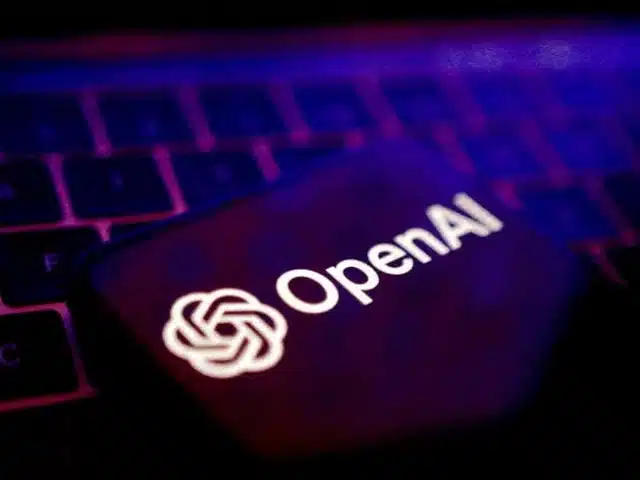OpenAI Seeks Funds for Infrastructure Expansion
OpenAI seeks funds for infrastructure to strengthen global AI capabilities and scale its computing ecosystem. The move reflects the rising demand for generative AI solutions worldwide.
The company plans to expand data centers, acquire high-performance chips, and secure reliable energy sources. These upgrades aim to support rapid adoption of AI tools across industries.
Why OpenAI Needs Infrastructure Investment
Generative AI models require massive computing power. Training and deployment consume advanced chips, large-scale servers, and energy-intensive data operations.
As user demand grows, existing resources cannot sustain long-term efficiency. OpenAI recognizes this challenge and moves to raise capital for infrastructure upgrades.
Officials highlight that infrastructure scaling is critical for maintaining innovation speed and service quality.
Increasing Global AI Demand
Generative AI adoption has skyrocketed since ChatGPT’s release. Businesses now integrate AI into customer service, research, healthcare, finance, and education.
The surge in adoption places enormous pressure on computing networks. Without new investment, AI companies risk bottlenecks in speed, accuracy, and user experience.
By seeking funds, OpenAI ensures it can manage growing workloads and maintain leadership in the competitive AI market.
Focus on High-Performance Chips
A major part of the infrastructure plan involves advanced AI chips. These processors accelerate model training and cut operational costs.
Industry experts suggest OpenAI could partner with global semiconductor leaders for supply security.
Chips remain scarce due to global demand, making procurement a top funding priority.
Data Centers & Energy Requirements
OpenAI’s infrastructure expansion includes building energy-efficient data centers. These centers will host AI models, ensuring faster processing and global reliability.
Energy sustainability forms another priority. AI operations consume large amounts of electricity, raising environmental and cost concerns.
OpenAI is exploring partnerships with renewable energy firms to power its future infrastructure responsibly.
Strategic Partnerships Expected
OpenAI seeks to attract funds through both equity investments and partnerships. Potential investors include technology giants, sovereign wealth funds, and venture capital firms.
Reports suggest OpenAI may also collaborate with cloud service providers for hybrid infrastructure. Such partnerships could cut costs and accelerate deployment.
By diversifying funding sources, OpenAI aims to secure long-term stability.
Balancing Growth with Regulation
While scaling infrastructure, OpenAI must also navigate global regulations. Governments are drafting AI laws to monitor ethics, data usage, and transparency.
Building infrastructure that aligns with regulatory frameworks will help OpenAI maintain trust.
Experts argue that infrastructure investments must include compliance mechanisms to meet evolving legal standards.
Competitive Landscape
OpenAI faces tough competition from Google, Anthropic, and Meta, all racing to expand AI ecosystems.
Competitors invest heavily in chips, data centers, and global AI networks. OpenAI’s funding push is vital to keep pace with rivals.
Analysts note that infrastructure scaling directly influences innovation speed and market dominance.
Impact on Business & Economy
OpenAI’s infrastructure investment will create ripple effects across industries.
- Technology sector: Chipmakers, cloud providers, and energy firms may see new contracts and revenue streams.
- Employment: Infrastructure projects may generate jobs in engineering, energy, and AI operations.
- Global economy: Stronger AI networks accelerate digital transformation in finance, healthcare, education, and retail.
The expansion will also strengthen the United States’ position as a leader in AI innovation.
Risks & Challenges
OpenAI faces challenges in raising sufficient funds. Infrastructure investments are capital-intensive and may require billions of dollars.
Supply chain disruptions, chip shortages, and energy constraints could delay projects.
Moreover, rising competition may drive infrastructure costs higher, increasing pressure on OpenAI to execute efficiently.
Looking Ahead
The decision to raise funds signals OpenAI’s determination to secure long-term AI leadership.
By expanding infrastructure, the company can scale its services, improve user experience, and maintain global competitiveness.
OpenAI’s move also sets a trend: AI firms worldwide will need to prioritize infrastructure investment to sustain growth.
Conclusion
The announcement that OpenAI seeks funds for infrastructure highlights the central role of computing power in AI’s future.
With data centers, advanced chips, and renewable energy at the core of its plan, OpenAI prepares to meet soaring global demand.
If successful, the initiative will not only strengthen the company’s position but also shape the trajectory of global digital transformation.







